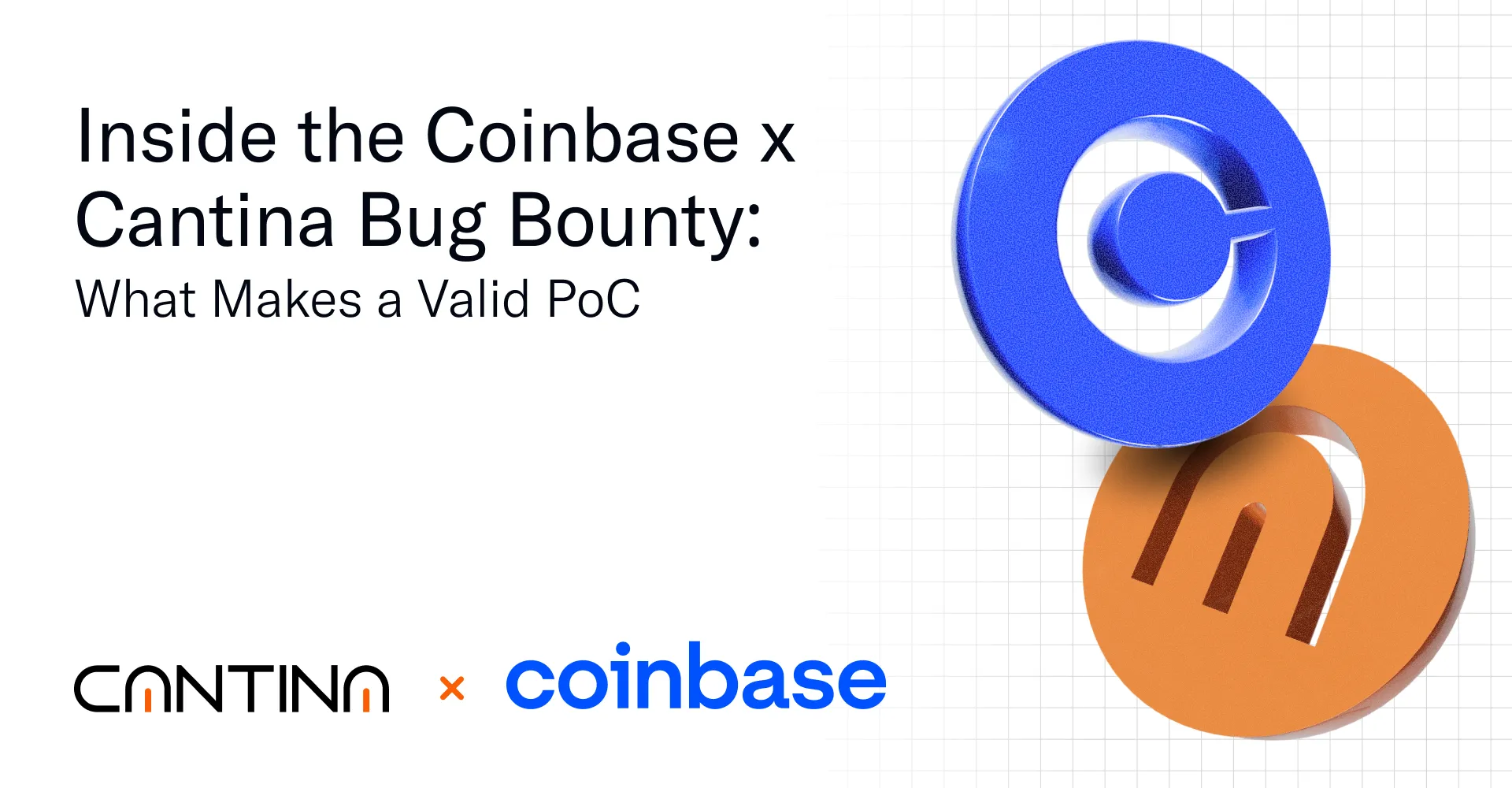Key takeaways from the Coinbase × Cantina X Space with Alexis Williams and Harikrishnan Mulackal
When Coinbase launched its $5M onchain bug bounty with Cantina, the goal was clear: make participation accessible while maintaining the highest technical standards. In a live X Space, Alexis Williams, Staff Blockchain Security Engineer at Coinbase, and Harikrishnan Mulackal, CEO of Cantina, shared insights into what defines a valid submission and why some fail to meet the threshold.
1. Accessibility First
Coinbase designed its bounty to be open to everyone with no staking, deposits, or gated entry.
Williams explained that smart contract vulnerabilities can come from anyone. “We don’t want friction to keep the right person from finding the right bug,” she said. Removing deposits ensures that all findings reach the security team directly and that Coinbase maintains a fast, efficient security funnel.
2. The Importance of Proof of Concept
Both speakers emphasized the same principle: the proof of concept is everything.
A valid PoC must be reproducible on-chain using Foundry fork tests, focus on the exploit logic and post-exploit state changes, and remain readable with clear structure and comments.
Coinbase reviews each PoC like an internal audit. The security team verifies whether the issue holds up in production context. If the exploit cannot be reproduced under real conditions, the submission is invalid.
3. Common Errors
Invalid reports often fall into two categories.
Technical depth issues occur when researchers make incorrect assumptions about system behavior or misuse Foundry cheat codes that do not reflect EVM conditions.
Over-mocking happens when simplified test environments remove critical context.
4. Writing for Humans
A clear, structured submission is easier to evaluate and earns more trust.
Mulackal advised researchers to describe the bug in fewer than 150 words, explain assumptions explicitly, and include a simple diagram or flow when useful. The proof of concept should demonstrate the exploit without unnecessary setup or noise.
5. Handling Rejection
Williams reminded researchers that invalid findings are part of the process. “It only takes one valid finding to change your trajectory.”
Cantina’s triage team provides detailed feedback to help researchers improve. Reading and applying that feedback is essential to progression.
6. Building Trust
Consistent, high-quality reports build credibility.
Submissions that are well-organized, reproducible, and technically sound help triagers work faster and create lasting recognition within the Coinbase security pipeline.
7. Severity and Accuracy
Every submission is reviewed promptly.
Overstating severity might get some immediate attention but hurts a researcher's reputation in the long term. Researchers should classify impact based on clear evidence and realistic conditions.
8. Scope and Opportunity
The Coinbase bug bounty program includes a wide range of assets such as Base, cbETH, cbBTC, BaseNames, staking contracts, DEX aggregators, and new acquisitions. Each protocol upgrade or integration introduces new potential vectors for review. Understanding scope depth and system changes helps researchers identify relevant risks.
9. Automation and AI
Both teams are investing in automation to streamline triage. Cantina’s internal AI system, Jadr, already reviews lower-risk submissions to flag invalid reports.
Williams noted that Coinbase is exploring static analysis and reasoning tools to assist with verification while maintaining data safety and control.
Conclusion
Coinbase and Cantina are setting a new standard for onchain bug bounties through accessibility and clear expectations. Researchers who prioritize clarity, depth, and reproducibility increase the likelihood of valid findings and faster resolution times.
Williams summarized it best: “Bug bounties are a mix of skill, opportunity, and timing. When those align, everyone wins - the researcher, the protocol, and the ecosystem.”
Coinbase’s $5M bounty program highlights a straightforward truth: valid submissions rely on rigor, not complexity.
The best findings are grounded in clear logic, reproducible testing, and concise communication. Researchers who focus on these fundamentals strengthen both their own practice and the broader security landscape.




